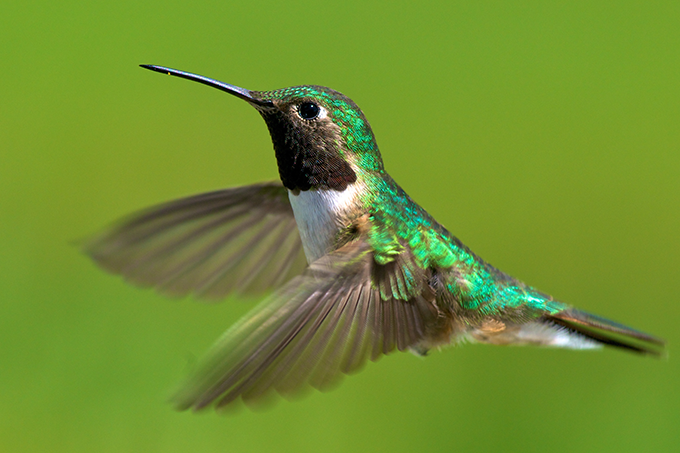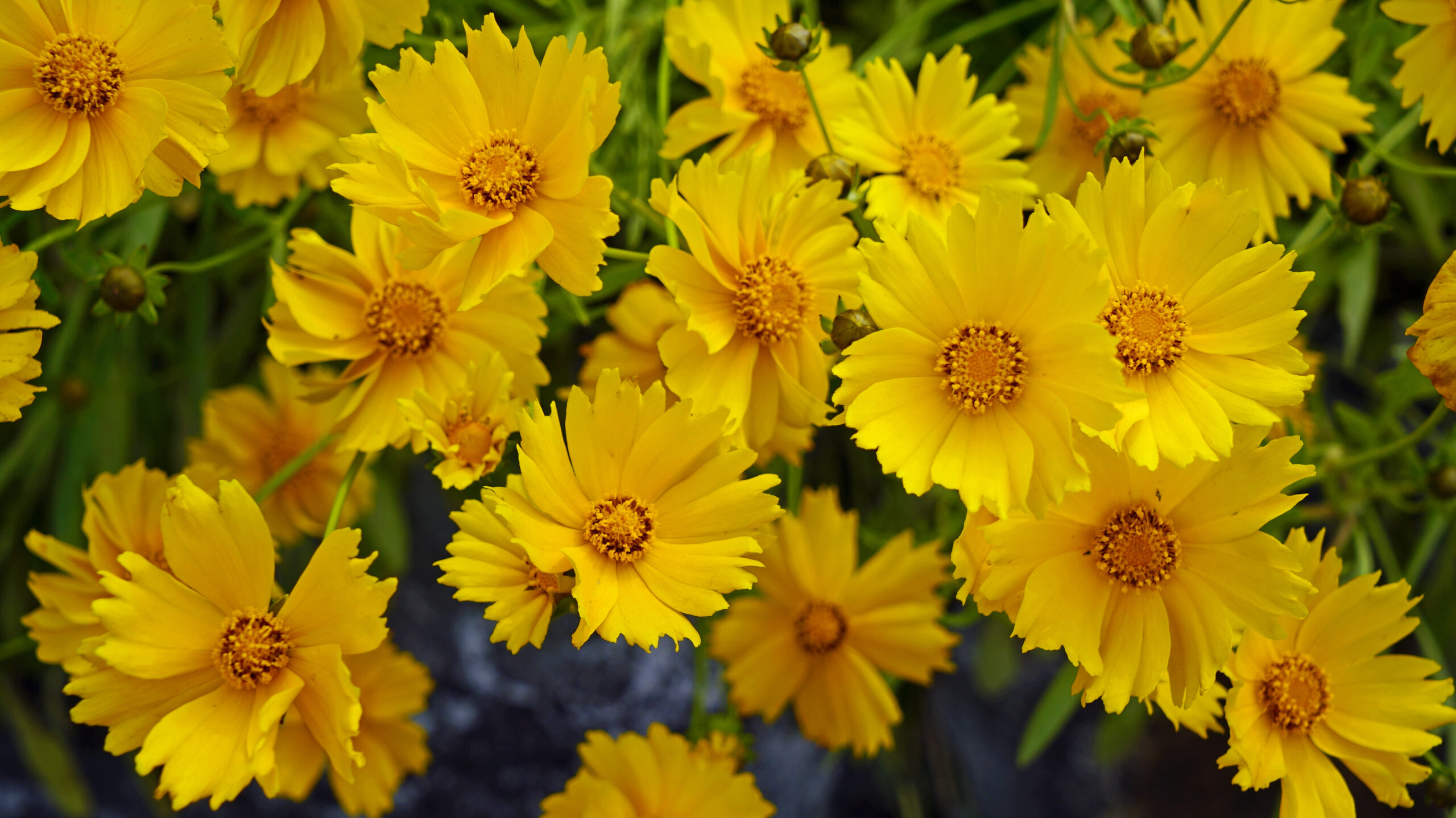Tax day, April 15th, may not be your favorite day of the year, but look on the bright side! It’s the day we can put out our hummingbird feeders along the Front Range and expect guests at any time!
Let’s look at some ways we can help out these amazing little creatures with food and shelter, and entice them into making our yards their yards.
First, let’s meet the hummers
Four hummingbirds are regular visitors to Colorado in the summer. All of them spend the winter in Mexico and Central America. Their flight across the Gulf of Mexico alone is an amazing 500 miles over open water!
The tiny Calliope hummer spends its time in Colorado at higher elevations, though it can occasionally be seen at urban feeders as it passes to and from its summer home.
Three other hummers are often frequent visitors to more developed settings. The Black-chinned is happy to visit urban landscapes that have plenty of flowering plants and at least a few trees for quick shelter.
The Rufous hummingbird is all about attitude! This burnt orange beauty takes full advantage of back yard flowers and feeders, and puts on a show in the process, protecting “its” territory.
The Broad-tailed hummer generally favors elevations above 6000′, but may still be seen at backyard urban feeders as it comes and goes.
Feed them and they will come?
It’s not quite that easy, but even considering the hummingbirds’ individual preferences for habit, persistence and patience by homeowners can pay off. The best approach is to create a garden that includes both feeders and flowers. Let’s take a look at feeders first.
Feed a hungry hummer with sugar syrup
A hummingbird’s cruising speed can average around 25 to 30 mph, so don’t be subtle when you’re trying to catch their attention. Make the feeders obvious. Put them where the birds can see them. Tagawa’s carries metal shepherd’s hooks that are perfect for hanging the feeders in a open area.
You could also hang the feeder under the outermost edge of a soffit where it’s clearly visible, especially if you have flowering plants nearby. Don’t put hummingbird feeders (or any bird feeders, actually) in the middle of a tree. The feeders should go near shelter like trees, but not in them. Small birds want to have a clear field of view to watch for dangers while they eat, but still have safe shelter close by.
The feeders themselves can be simple and traditional. Tagawa’s carries several options, large, small and in between.
The feeders can also be more ornate and decorative, almost like garden art! Tagawa’s carries a wonderful variety of playful hummingbird feeders that are bright and colorful, but still fully functional.
The “best” feeder is the one that’s easy to keep clean (they should be washed out every few days), and that attracts the birds that visit your neighborhood.
The sugar syrup for hummers should be four parts water to one part granulated sugar. Boil, cool then store any extra in the refrigerator for up to two weeks until you need it. No red food coloring, please!
Hummingbird traffic early in the season may be light, so don’t fill the feeders completely in the beginning. Start out by filling a third or half of the feeder, then increase the amount you offer only when the hummer traffic begins to pick up. The syrup should be replaced every few days, especially during hot weather when mold can begin to grow. If a hummer comes to your feeder and the food has spoiled, you’ve likely lost a customer for good.
Hummingbirds forage for insects and small spiders, too. Reducing or eliminating the use of pesticides can make your yard more hummingbird friendly.
Hummingbird feeders…. and flowers too? You bet!
Hanging up a feeder is quick and easy. Growing a garden that will bring in the hummers takes more time and effort, but it can be so worth it! The goal is to use the feeder and the flowers in combination to create a yard the hummers can’t resist.
Tagawa’s has a list of plants that hummers love to visit. The lists are free in our Perennials Department. Hummingbirds like trumpet-shaped flowers… blossoms with long tubes that other birds and insects can’t reach down into.
The hummers are definitely fond of red, but they’ll gladly go to other colors, too, like pink, purple, yellow and orange. They don’t have any sense of smell, so grow those hummingbird-friendly plants in large pools and drifts that the hummers can’t miss.
As the gardening season unfolds, Tagawa’s will be loaded with some of the hummers’ favorites flowers. Here are just a few plants that these wonderful little birds favor. Try to plant several in one place for more visual impact.
Columbine
Deep-throated flowers in a variety of colors, including the blue and white variety that is the Colorado State flower; “Denver Gold” (as shown) is taller than other columbines, with flower color that stays true; will tolerate some sun.
Red Birds in a Tree
Delightful bird-shaped flowers appear along the ends of tall, gracefully arching branches that dance with the breeze; a favorite of children.
Honeysuckle
Tall vines come in a variety of colors; flowers in the red/orange shades are hummingbird magnets.
Scabiosa (a.k.a. Pincushion flower)
Pompom-type blossoms actually have tiny tube-shaped flowers at their center.
So, your hummingbird homework:
- Set out feeders now in clearly visible places with fresh sugar syrup. No food coloring needed!
- Look at your yard or garden and decide where to include great hummingbird plants from Tagawa’s. Don’t forget to pick up our free copy of recommended hummingbird-friendly plants.
- Wait patiently and keep your eye’s open! The hummers are heading this way. Let’s make them feel at home!
[coupon couponid=”3212″ name=”Hummingbird”]
[PC-Popup id=46]













